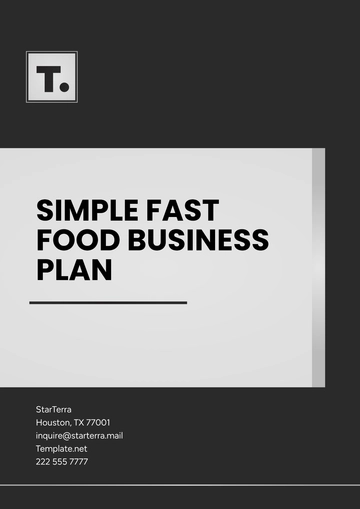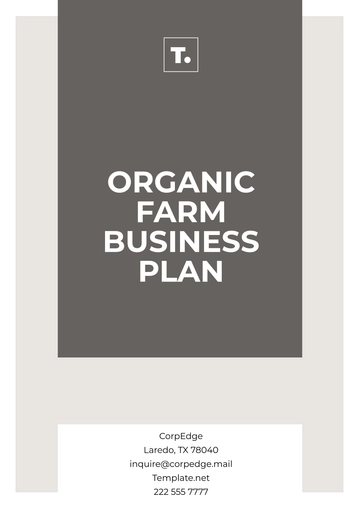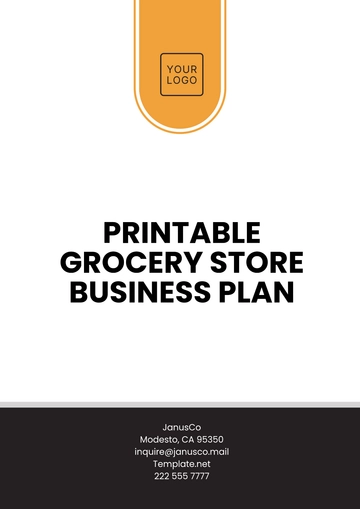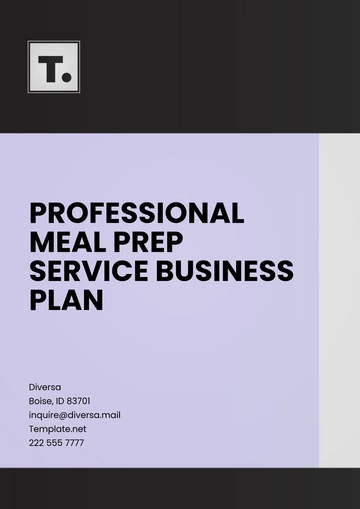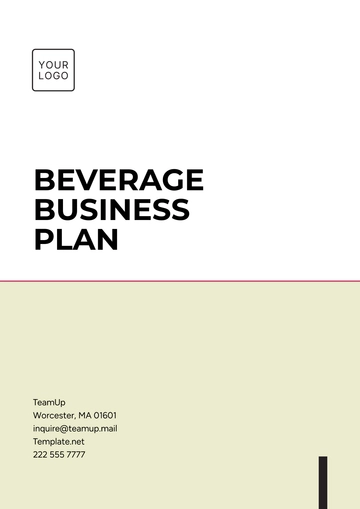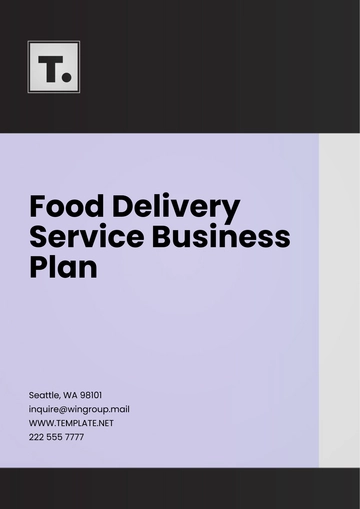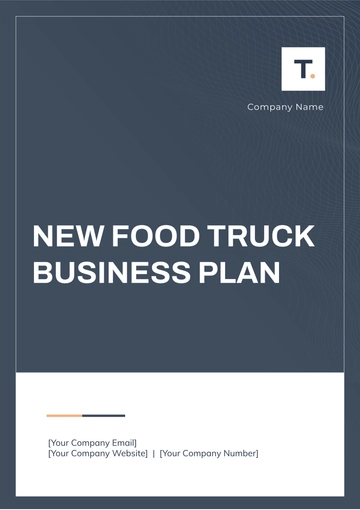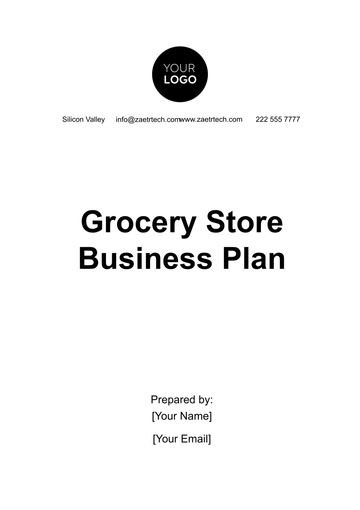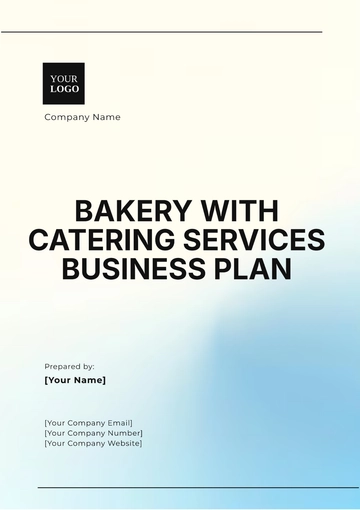Free Grocery Store Business Plan
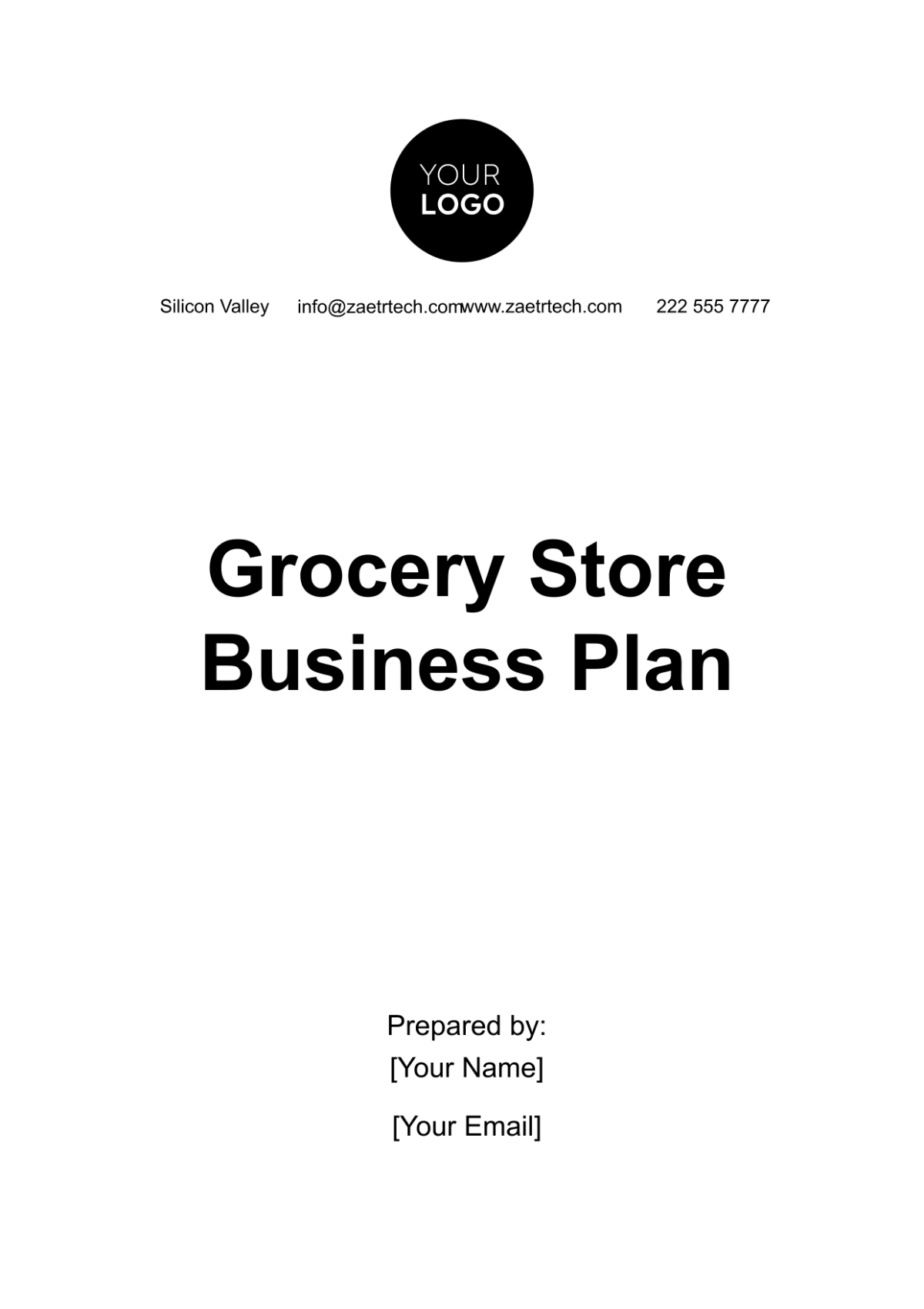
1. Executive Summary
1.1. Business Overview
[Your Company Name] is set to become a leading grocery store in [Your Company Address], specializing in organic and locally sourced products. With a projected opening in [2050] and operating into [2060], the store aims to provide a diverse range of products to meet the growing demand for healthier food options. The store will feature a fresh produce section, a bakery, a deli, and a variety of grocery items, catering to a wide customer base. Our mission is to offer quality products while supporting local farmers and sustainable practices. This will be achieved by leveraging technology for inventory management, customer engagement, and marketing, ensuring we remain at the forefront of the grocery industry.
1.2. Vision and Mission Statement
Vision: To be the go-to grocery store for health-conscious consumers and families in [Your Company Address], recognized for our commitment to quality, sustainability, and community engagement. We envision a future where our store becomes an integral part of the community, promoting healthy eating and sustainable living.
Mission: To provide a wide variety of high-quality, organic, and locally sourced grocery products while fostering a community-centric shopping experience that promotes sustainable practices. Our goal is to make organic food accessible and affordable for all, ensuring every customer feels valued and informed about their food choices.
1.3. Objectives
Achieve sales of [$1,500,000] within the first [three] years of operation, with an annual growth rate of [15%] by [2065].
Establish partnerships with at least [10] local farmers and suppliers by the end of [Year 2062], ensuring a steady supply of fresh, organic products.
Implement a customer loyalty program that attracts at least [5,000] loyal customers within the first [six] months, with a target participation rate of [30%] by [2065].
Achieve a customer satisfaction rate of over [90%] by continuously improving our product offerings and services, measured through regular surveys and feedback mechanisms.
1.4. Keys to Success
Quality Product Offerings: Focus on organic, non-GMO, and locally sourced products to attract health-conscious customers. Regularly review and update product selections to align with customer preferences and market trends.
Exceptional Customer Service: Train staff to provide knowledgeable and friendly service, enhancing the shopping experience and encouraging repeat visits.
Effective Marketing: Utilize both traditional and digital marketing strategies to reach our target audience effectively, leveraging social media and community engagement to build brand awareness.
Community Engagement: Build strong relationships with local farmers, producers, and the community to foster brand loyalty and support local economies. Host events and workshops to educate customers about nutrition and sustainable practices.
2. Company Description
2.1. Company Ownership
[Your Company Name] will be established as a limited liability company (LLC) to provide flexibility and protect personal assets. The ownership will consist of [3] partners with diverse backgrounds in retail management, business administration, and culinary arts. Each partner will bring valuable expertise and resources to ensure the success of the grocery store. Additionally, the company will explore opportunities for community ownership models, allowing customers to invest in and participate in the growth of the business.
2.2. Location and Facilities
The grocery store will be located in [Your Company Address], which is known for its community-oriented environment and family-friendly demographics. The chosen location boasts high visibility, ample parking, and accessibility to public transportation. The facility will encompass approximately [5,000] square feet, featuring a modern design that promotes a welcoming atmosphere. The layout will include:
Produce Section: Approximately [1,000] square feet dedicated to fresh fruits and vegetables.
Bakery: A [500] square foot area for freshly baked goods, including bread, pastries, and cookies.
Deli Counter: A [400] square foot space offering ready-to-eat meals and catering services.
Grocery Aisles: Approximately [2,500] square feet dedicated to dry goods, canned products, beverages, and household items.
Checkout Area: Multiple registers in a [600] square foot space to minimize customer wait times.
2.3. Product and Service Offerings
[Your Company Name] will offer a diverse range of products and services to meet the needs of our customers, including:
Fresh Produce: Organic fruits and vegetables sourced from local farmers.
Bakery Products: Freshly baked bread, pastries, cakes, and cookies.
Deli Items: Prepared meals, sandwiches, and salads made daily.
Grocery Items: A wide selection of organic and conventional dry goods, snacks, beverages, and household essentials.
Health and Wellness Products: Vitamins, supplements, and natural health products to promote overall well-being.
2.4. Market Needs
The demand for organic and locally sourced products has been steadily increasing, driven by consumer awareness of health and sustainability. [Your Company Name] aims to meet this growing demand by providing high-quality products that cater to health-conscious consumers, families, and individuals seeking convenient meal solutions.
3. Market Analysis
3.1. Industry Overview
The grocery store industry is projected to grow significantly, with increasing consumer preferences for organic and natural products. According to market research, the organic food market alone is expected to reach [$100 billion] by [2060], representing a compound annual growth rate (CAGR) of [10%]. This growth presents a substantial opportunity for [Your Company Name] to capture market share by focusing on quality and sustainability.
3.2. Target Market
Our primary target market includes:
Health-Conscious Consumers: Individuals and families who prioritize organic and non-GMO products in their diets. This segment is estimated to account for [30%] of the local population.
Busy Professionals: People seeking convenient meal solutions, such as prepared foods and easy-to-cook groceries, estimated at [25%] of the market.
Families: Households with children looking for healthy, affordable food options, making up approximately [35%] of the customer base.
Older Adults: Seniors focusing on health and wellness who are interested in organic and nutritional products, estimated at [10%] of the target market.
3.3. Market Trends
Several key trends are shaping the grocery industry, including:
Sustainability: Growing consumer awareness of environmental issues is driving demand for sustainable products and practices.
Online Shopping: The rise of e-commerce and home delivery services has changed how consumers shop for groceries, leading to an increased focus on online ordering and delivery options.
Health and Wellness: Consumers are increasingly looking for products that promote health, wellness, and transparency regarding sourcing and ingredients.
3.4. Competitive Analysis
[Your Company Name] will face competition from both national chains and local grocery stores. A competitive analysis indicates:
Competitor Name | Strengths | Weaknesses |
|---|---|---|
Local Grocery Store A | Strong community ties | Limited organic offerings |
National Chain B | Brand recognition | Higher prices for organic products |
Specialty Store C | Extensive organic selection | Smaller market share |
To differentiate [Your Company Name], we will focus on providing superior customer service, a well-curated selection of organic products, and a commitment to sustainability.
4. Marketing Strategy
4.1. Marketing Objectives
The marketing objectives for [Your Company Name] include:
Build brand awareness within the local community, aiming for a recognition rate of [70%] by the end of the first year.
Increase foot traffic to the store by [20%] within the first year through targeted marketing campaigns and community events.
Achieve a customer acquisition cost of less than [$10] per customer by utilizing cost-effective marketing strategies.
4.2. Pricing Strategy
[Your Company Name] will adopt a competitive pricing strategy that reflects the quality of our products while remaining accessible to our target market. Key pricing considerations include:
Competitive analysis of similar products in the area.
A price range that is approximately [5-10%] higher for organic products compared to conventional alternatives.
Regular promotions and discounts for loyalty program members to incentivize repeat purchases.
4.3. Promotional Strategy
Promotional strategies will include:
Social Media Marketing: Engaging content on platforms like Instagram, Facebook, and Twitter to showcase products, recipes, and customer stories, with a goal of achieving [10,000] followers by the end of the first year.
Local Events: Hosting workshops, tastings, and health seminars to educate customers about healthy eating and promote community involvement.
Email Marketing: Monthly newsletters featuring new products, promotions, and tips for healthy living, targeting an open rate of [25%].
4.4. Distribution Strategy
Distribution strategies will include:
A well-organized store layout that facilitates easy navigation and accessibility to products.
Partnership with local delivery services to offer home delivery options, aiming to capture [15%] of sales through online orders by [2065].
Utilizing an efficient inventory management system to ensure product availability and reduce waste.
5. Operations Plan
5.1. Store Layout
The store layout will be designed to enhance the shopping experience. Key features include:
Welcoming Entrance: A bright and open entrance leading directly to the fresh produce section, encouraging customers to explore.
Organized Aisles: Clearly marked aisles for easy navigation, with signage indicating product categories and promotional displays.
Check-Out Area: Multiple checkout lanes equipped with modern POS systems to minimize wait times.
5.2. Supply Chain Management
Effective supply chain management will be critical to our operations. Strategies include:
Establishing relationships with [10] local farmers and producers to ensure a consistent supply of fresh products.
Implementing inventory management software to monitor stock levels, forecast demand, and reduce waste.
Regularly reviewing supplier performance to ensure quality and reliability.
5.3. Staffing Plan
Our staffing plan will ensure we have a team of knowledgeable and friendly employees. Key elements include:
Hiring [20] staff members, including cashiers, stock clerks, and a store manager, with training programs focusing on customer service and product knowledge.
Offering competitive wages starting at [$15] per hour, with benefits including health insurance and employee discounts.
Conducting regular performance evaluations to promote employee growth and retention.
5.4. Customer Service Strategy
Exceptional customer service will be a cornerstone of our operations. Strategies include:
Implementing a training program for staff to enhance their product knowledge and customer interaction skills.
Establishing a feedback mechanism through surveys and suggestion boxes to continuously improve service.
Creating a customer loyalty program that rewards repeat purchases with discounts and exclusive offers.
6. Management Structure
6.1. Organizational Structure
[Your Company Name] will have a clear organizational structure to streamline operations. The structure will include:
Owner/CEO: Overall responsibility for the business strategy and financial management.
Store Manager: Responsible for daily operations, staff management, and customer service.
Department Heads: Individuals overseeing specific areas such as produce, deli, bakery, and grocery.
6.2. Management Team
The management team will consist of individuals with diverse backgrounds and expertise:
Owner/CEO: [Name], with over [10] years of experience in retail management and a passion for sustainable living.
Store Manager: [Name], who has a strong background in grocery operations and customer service.
Marketing Director: [Name], with expertise in digital marketing and community engagement.
6.3. Advisory Board
An advisory board will be established to provide strategic guidance and support. Members will include:
Local business leaders with experience in retail and community development.
Experts in sustainability and organic farming.
Representatives from local health organizations to provide insights on health trends.
7. Financial Plan
7.1. Startup Costs
The startup costs for [Your Company Name] are estimated to be approximately [$750,000]. Key expenses include:
Expense Category | Amount ($) |
|---|---|
Leasehold Improvements | [150,000] |
Equipment (POS, Shelving) | [100,000] |
Initial Inventory | [300,000] |
Marketing and Advertising | [50,000] |
Staffing and Training | [100,000] |
Miscellaneous Expenses | [50,000] |
Total Startup Costs | [750,000] |
7.2. Revenue Projections
Revenue projections for the first five years of operation are as follows:
Year | Projected Revenue ($) | Projected Expenses ($) | Net Profit ($) |
|---|---|---|---|
Year 1 | [1,500,000] | [1,200,000] | [300,000] |
Year 2 | [1,725,000] | [1,380,000] | [345,000] |
Year 3 | [1,984,000] | [1,500,000] | [484,000] |
Year 4 | [2,282,000] | [1,650,000] | [632,000] |
Year 5 | [2,618,000] | [1,800,000] | [818,000] |
7.3. Break-Even Analysis
The break-even analysis indicates that [Your Company Name] will need to generate approximately [$1,200,000] in sales to cover fixed and variable costs. The break-even point is expected to be reached within the first [18] months of operation.
7.4. Funding Requirements
To launch [Your Company Name], we will seek funding of [$500,000] from various sources, including:
Owner Investment: [Your Company Name] partners will contribute [$200,000].
Bank Loan: A loan application for [$300,000] will be submitted to cover startup costs.
Grants: Applications will be submitted for local business development grants to support our sustainability initiatives.
- 100% Customizable, free editor
- Access 1 Million+ Templates, photo’s & graphics
- Download or share as a template
- Click and replace photos, graphics, text, backgrounds
- Resize, crop, AI write & more
- Access advanced editor
Launch your grocery store with the Grocery Store Business Plan Template from Template.net. This editable and customizable template outlines your business goals, strategies, and financial forecasts. Tailor it using our Ai Editor Tool to pave your path to success. Start strong—craft a winning business plan for your grocery store today!
You may also like
- One Page Business Plan
- Coffee Shop Business Plan
- Restaurant Business Plan
- Food Business Plan
- Real Estate Business Plan
- Executive Summary Business Plan
- Cover Page Business Plan
- Nonprofit Business Plan
- Daycare Business Plan
- Construction Business Plan
- Startup Business Plan
- Medical Business Plan
- Bakery Business Plan
- Service Plan
- Hotel Business Plan
- Catering Business Plan
- School Business Plan
- Healthcare Business Plan
- Transportation Plan
- Sports Plan
- Car Wash Business Plan
- Salon Business Plan
- Clothing Business Plan
- Farming Business Plan
- Boutique Plan




